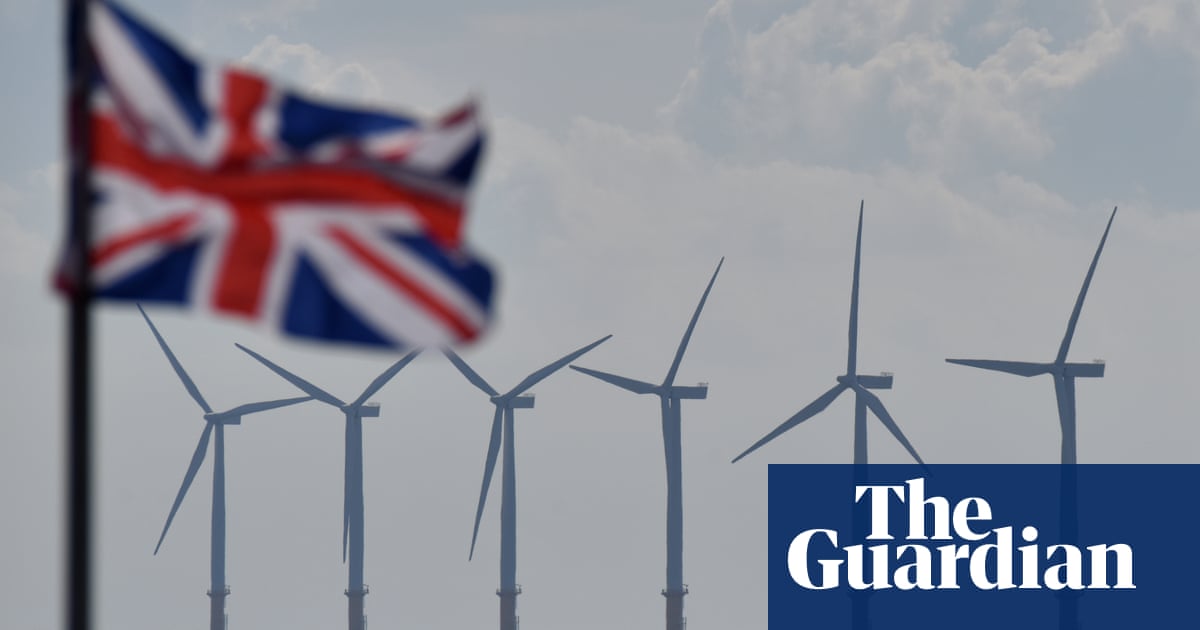
Britain’s climate ambitions have suffered a blow after no new offshore windfarms were secured in the government’s latest clean energy auction despite there being the potential for 5 gigawatts of projects – enough to power 8m homes a year.
While it did result in contracts for a total of 3.7GW of solar power, onshore wind and tidal power projects, industry sources said the “catastrophic outcome” for the offshore wind sector put Britain’s green energy targets at risk and failed to deliver new jobs and lower energy bills.
So how did things go so far wrong for Britain’s most successful clean energy sector?
Why did no offshore wind developers bid?
None of the UK’s biggest offshore wind developers took part in the auction after many complained to government ministers and officials that the maximum price had been set too low.
The auction awards a 15-year contract to the clean energy projects that bid the lowest price for the clean electricity they go on to generate. This has helped to drive down the price of renewable energy, but in recent months high inflation has caused costs across the industry to rise.
Offshore wind developers warned that the auction’s maximum price, which was similar to previous auction rounds, was now too low for their projects to make any money.
They had called on the government to raise the auction’s starting price, arguing that even at higher costs their electricity would be cheap enough to help lower household energy bills. However, industry sources said ministers and mandarins “ignored” the warnings.
Why is offshore more expensive now?
Until recently, offshore wind was considered Britain’s cheapest source of electricity. In the government’s previous clean energy auction, developers bid £37.35 per megawatt hour (MWh) to generate offshore wind power.
But since then the industry has faced a double economic blow that has compounded costs. First, the cost of building and installing wind turbines has rocketed because the price of materials has risen sharply owing to the energy crisis. Then, the cost of borrowing money to finance the multibillion-pound projects has climbed in line with global interest rates.
The Swedish energy company Vattenfall estimates that in total its costs have increased by about 40%. It said earlier this year that it would cease working on the multibillion-pound Norfolk Boreas windfarm because rising costs meant it was no longer profitable.
So what might a fair price look like?
The cost of offshore wind has tumbled since the government’s first contract auction in 2015, when offshore windfarms secured a guaranteed price of £155 per MWh in 2012 money – the benchmark for these contract auctions. By last year’s auction that had fallen to the equivalent of £37.50 per MWh.
This year’s starting price for the auction was slightly higher at £44 per MWh in 2012 money, narrowly above the previous winning bids but too low for an offshore project built under today’s cost pressures.
That rate works out at about £60 per MWh in 2023 prices. Given the current wholesale market price for electricity is higher than £80 per MWh, the government had significant leeway to offer a more generous level and still get electricity cheaper than today’s wholesale cost.
What is at stake?
The auction’s outcome risks creating a domino effect of failed climate targets, billions in missed investment and higher energy bills.
First, it poses a significant risk to the UK’s plan to triple Britain’s offshore wind capacity to reach 50GW by 2030, or enough to power the equivalent of every home in the UK. This in turn risks derailing Britain’s plan to establish a “net zero” electricity system by 2035. Finally, the UK’s legally binding pledge to be “net zero” across the economy could also become impossible to reach by 2050.
In the shorter term there is likely to be a blow to the UK’s green economy by upending the offshore wind supply chain, which was expected to create more than 100,000 new jobs by the end of the decade.
Finally, UK consumers are likely to have higher home energy bills. The industry trade group, Renewable UK, said the lost windfarms could have saved consumers £2bn a year compared with the cost of using electricity from gas power plans – equivalent to £24 on the average annual household bill.
Why did the government fail to act?
One senior industry source claimed that government officials had not fully grasped the scale of the cost increases faced by offshore wind developers and had suspected that companies were “crying wolf” in order to extract higher prices from the auction.
“The problem with that, if you remember the fairytale, is that there really was a wolf in the end. The government officials now have their wolf,” the source added.
Ministers are also likely to have been wary about increasing the size of the subsidy contracts, which are paid for through energy bills, while the energy crisis continues to pile pressure on struggling households.
What can the government do next?
The industry has called on ministers to adjust the auction rules in time for next year’s round of bidding so that offshore windfarms are able to compete.
RenewableUK said it would need “urgent action” to fix the investment framework, including a reform of the contracts and more support for the supply chains affected by the failure of this year’s auction.
It has also suggested other “fiscal measures” to attract clean energy investment into the UK in the face of global competition.












